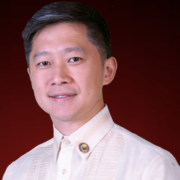Sculpting a legacy from indigenous threads
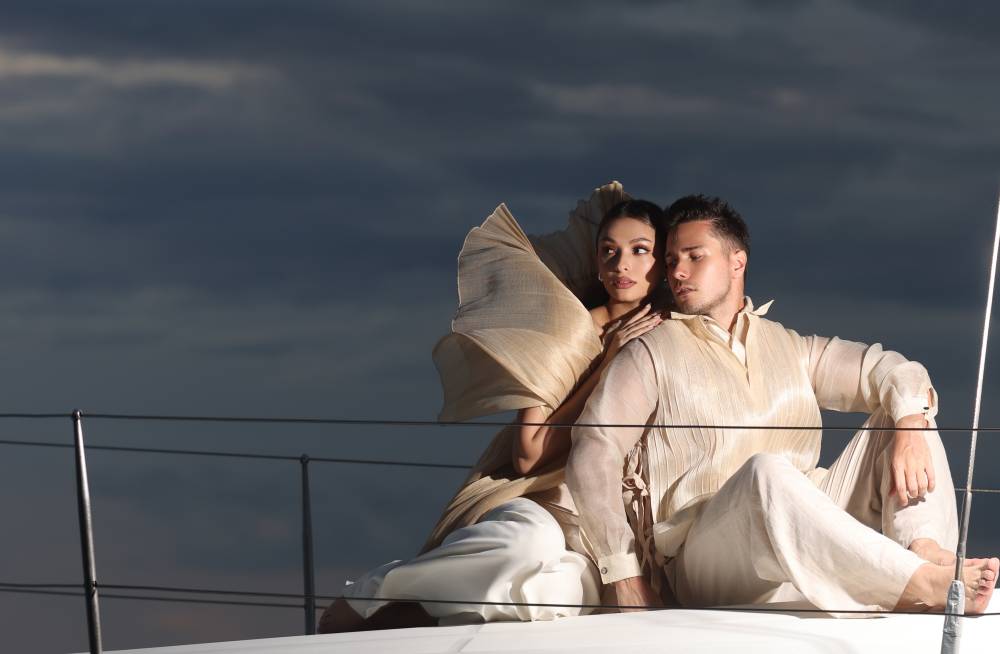
As a young girl spending summers on her father’s cattle ranch in Mindoro, Ditta Sandico stumbled upon a quiet miracle of transformation. On one of their trips to the mountains, she watched a farmer pluck cotton balls from a plant, patiently remove the seeds, spin the fibers into thread, then weave and dye them into fabric.
“For me, it was magical to see how cotton balls became fibers,” she recalled. “Even now, the locals can’t quite explain where the threads came from.”
That moment of wonder left a lasting impression—one that would guide her lifelong commitment to crafting fashion from indigenous materials.
Forty years later, Sandico marked her milestone year—and her latest birthday—with a fashion show at Manila House. Titled “Quadrova by Ditta,” the show signaled an evolution beyond her signature wraps.
“Quadrova” is a coined term blending quadro—Italian for “painting”—with a sense of movement, suggesting “a painting in motion.” It reflected Sandico’s fusion of visual art and fabric manipulation for sculptural effects in her 40th anniversary collection.
She produced 40 pieces across four themes: full-length banaca (banana-abaca blend) formal wear, banaca bridal pieces, Mangyan-inspired separates, and kimonos adorned with sublimation prints of her paintings with Mangyan trim.
The garments reflected Sandico’s deepening embrace of sustainability. Swirls of floral bouquets, fluttering leaves, and intricate cascades were sculpted from scrap fabric and discarded banaca, breathing new life into what would have been waste.
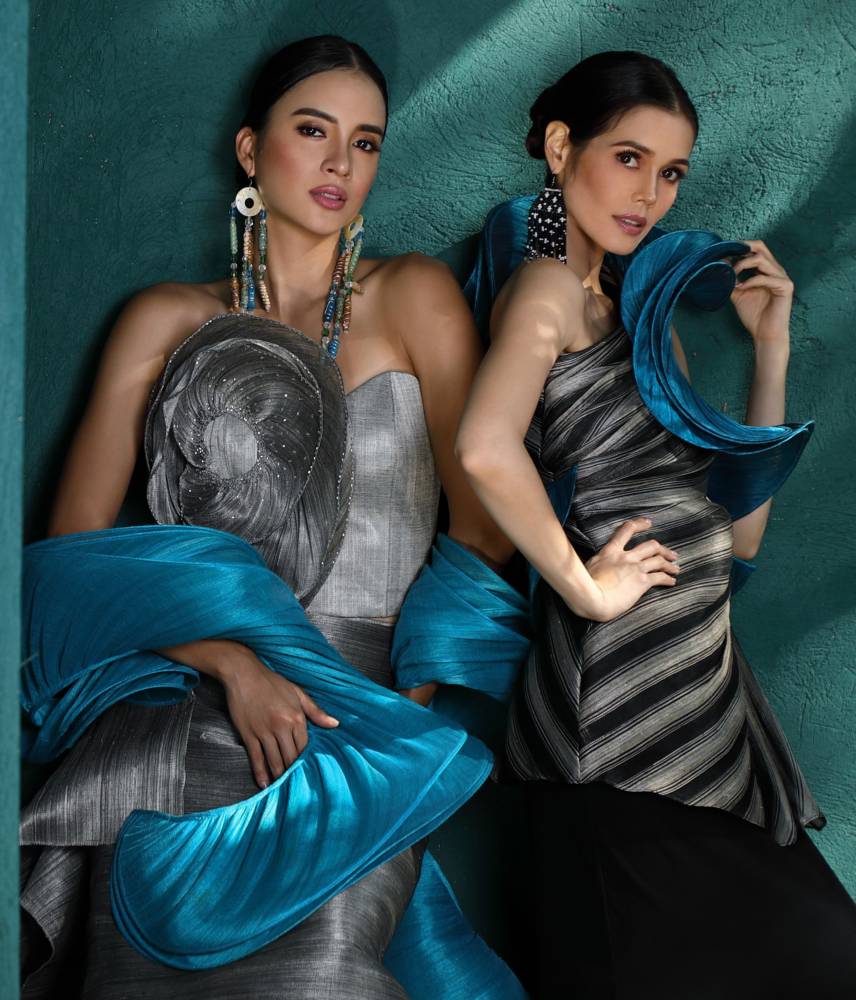
Design vocabulary
Sandico has expanded her design vocabulary beyond her tops to include full-length gowns and flowing skirts. Her evening wear was rendered in bright, metallic hues and often paired with silk or crepe chemise dresses and pants. These pieces were more sculptural, marked by twirls, swirls, and waves of banaca that lent volume and movement.
Her muses for these dramatic silhouettes included friends—women accomplished in their fields—and supportive homemakers joining in the 40-year celebration.
The anniversary collection also introduced bridal wear, defined by neutral tones and embellished with banaca flowers and petals, their surfaces glinting with rhinestones and beadwork. Trains were given greater body, and dresses were shaped by adding pleated and boned banaca that created soft, flowing waves.
Under lights, these details caught the eye, adding depth and texture. “You can see sweeping lines that make the fabric stand up,” Sandico said.
Among the standout accents were the foglias, leaf-like forms that draped over the shoulders or curved around the torso. “These embellishments could stand on their own,” she said. “I wanted to focus on the sculptural effect for drama.”
Given banaca’s natural stiffness, Sandico balanced the structure with simplicity—pairing swirls and curls of the fabric with minimalist silk gazar chemises or clean-cut separates, allowing the sculptural elements to shine.
“We don’t over-decorate,” she said. “We really just want to enhance a woman’s beauty through the way the fabric curves around the body.”
The collection likewise introduced men’s formal shirts made of hand-pleated banaca.
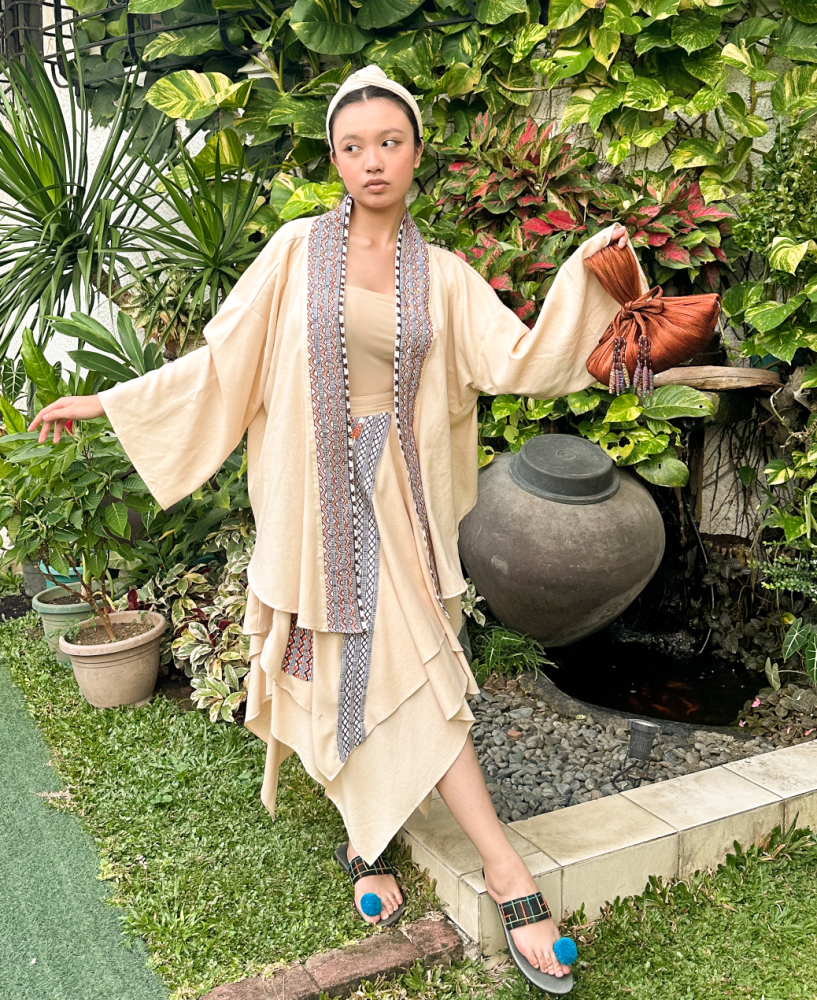
Beneficiaries
During the pandemic, Sandico returned to her fine arts roots, a shift that has since influenced her fashion. Her surrealist paintings appeared on kimono-style tops, each piece incorporating a panel of Mangyan embroidery. Prints of bare trees etched against a sunset sky inside a torso, and a woman with eyes obscured by flowers, surrounded by lush foliage, brought a new artistic dimension to the garments.
The Hanunuo Mangyan community, known for their finely handwoven cotton textiles and intricate embroidery, will be the primary beneficiaries of Sandico’s efforts. Their embroidery is characterized by delicate, geometric motifs—zigzags and complex cross-shaped designs—stitched in vibrant thread onto ramit, narrow cotton strips.
These designs, rich with ancestral symbolism, are created on back-strap looms using methods handed down through generations. Labor-intensive and deeply rooted in cultural identity, these textiles are often used as accent pieces in Sandico’s garments.
Plans are now underway to build a multipurpose hall in Panaytayan for the children of Mangyan weavers. Currently, community gatherings such as graduation ceremonies take place on an open stage, leaving participants vulnerable to the elements.
“Since they’ve been getting more orders for weaving, they’re earning more,” Sandico noted. Still, one embroidered strip can take up to two months to complete, underscoring the challenges of producing a full bolt of Mangyan fabric.
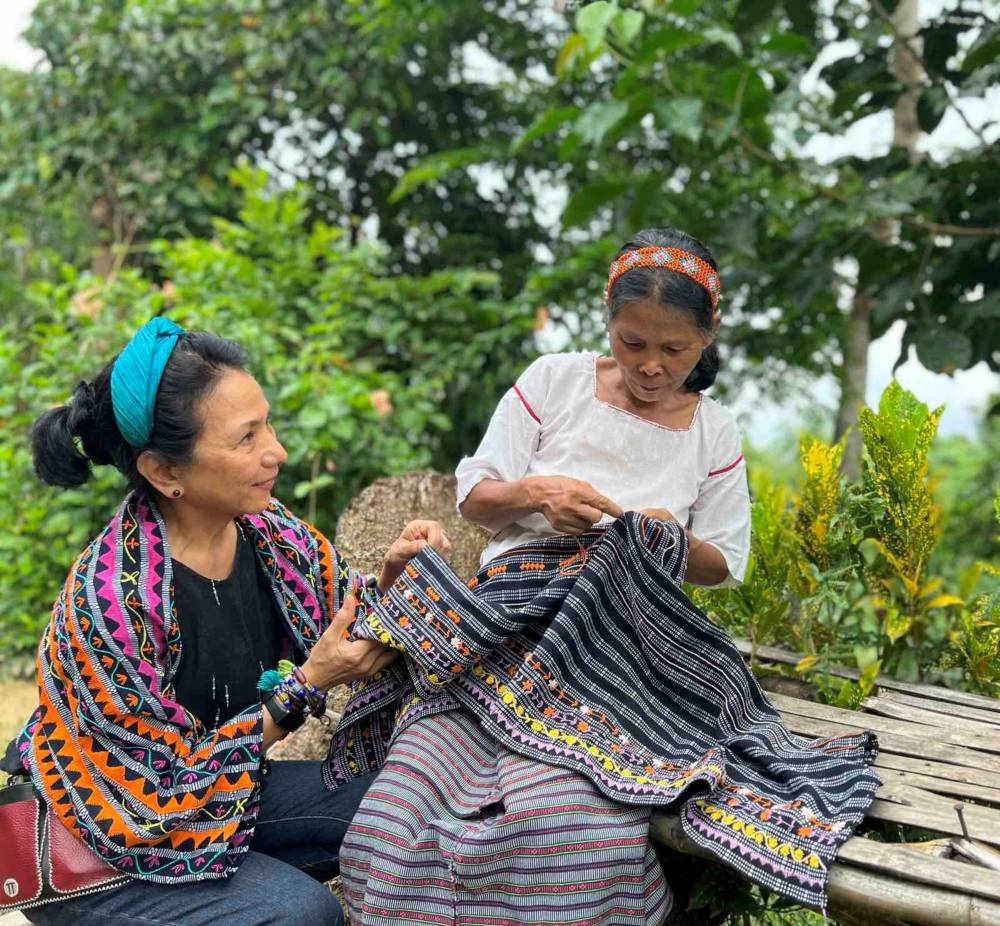
Meanwhile, her banaca operation is also growing. She is scouting locations for a permanent weaving center—one safer than the current site, which is open to typhoons. “I’ve been working with them for over 30 years,” she said. “So the production is consistent, regardless of how many pieces they turn out.”
Sandico takes pride in the creative legacy she’s cultivating. Her daughter, Mirei Monticelli, an industrial designer based in Milan, now sources banaca to craft sculptural lamps, sold in high-end boutiques in New York and Europe. She is also grooming her assistant, Janina Santos, as her design successor.
Yet, there’s a quiet irony in how Sandico’s contributions have been received. Though she pioneered championing banaca in fashion, her work has often been overlooked in favor of flashier names.
“Other designers have experimented with abaca and found success,” she said. “We can’t really claim it anymore. But at least we’re keeping up—not just with trends, but with values we want to pass down.”
Her clients understand that. Many women return with old pieces to be reworked or revived. “That’s what we want to do—even with our brides and clients. We can restyle a gown, make it new again,” she said. “Everything is recyclable. That’s how we preserve this beautiful fabric—and help eliminate the idea of constantly buying something new. That’s sustainability.”










